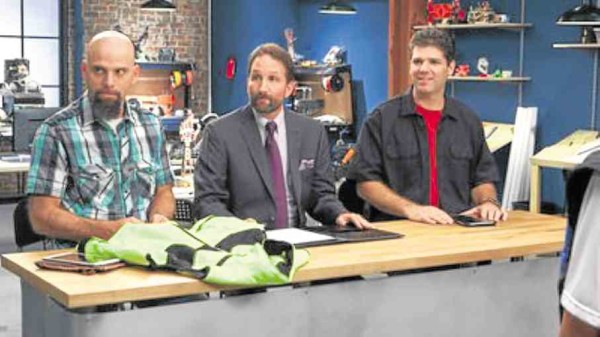When inventor and investor meet
Our continuing quest for unique viewing treats has come up with a hearty harvest this month, paced by the very practical and helpful “inventions” show, “Invent It Rich,” on Discovery. The weekly program, which we watched locally last Saturday, invited inventors of practical products to “pitch” their gadget’s virtues to a panel of experts and specialized consultants.
They vet it stringently for originality, appeal to many potential buyers, acceptable price, reliable function—and potential for substantial profits.
The tilt isn’t for lofty, ivory-tower experimenters and dreamers, but for practical people who identify a felt need that has yet to be serviced, come up with a gadget or another product that economically fills it, and clearly prove that it’s worth the investment offered to the week’s winner by the show’s resident and tough-as-a-nut investor.
The telecast we watched featured home-crafted inventions like a contraption that melted ice off a car windshield wiper (for use in winter), “augmented reality” goggles, a handy “repair-all” gadget, and an updated trike for “drift driving” aficionados.
The gadgets were first subjected to field tests designed to make the new invention instantly “deliver” as promised, absolutely no excuses allowed.
Article continues after this advertisementThe trike was a hit with the testers—but, most instructively, it was soon eliminated from consideration due to its steep projected price.
Article continues after this advertisementLesson learned: If you want to make your invention appeal to many potential buyers, you’ve got to price it way down. The reason for this is that many people buy with a “bargain” mentality at play, or on a whim or impulse.
If your product is “cheap,” they can more readily choose to buy it now, because they can afford it. Based on the other, more “affordable” products featured last week, the key price ceiling for this “buy now” mode to kick in is—around $50.
Alas, the updated trike was priced way beyond that, so nobody impulsively decided to buy it, even if it was a big hit with the product testers.
The show relies a lot on a carefully selected focus group of “ordinary” people for hands-on feedback and suggestions on how to further improve new products to maximize their value and “buyability.” The investors were made to listen in on their spontaneous comments and critiques—an experience that proved to be most illuminating—and chastening.
The members of the focus group were really tough potential customers, who minced no words in dissing the inventions that didn’t live up to their glowing blurbs, or were priced too “shamelessly” high.
The weekly tilt’s final stage “starred” the show’s resident investor and moneybags, who turned out to be even tougher and no-nonsense than the focus group. If a new product didn’t promise him hefty sales and profits, he wasn’t interested, even if it had passed all of the previous levels of scrutiny with flying colors.
And his investment was “shockingly” miserly—just $50,000 for 30 percent of the new business! His explanation: It would cost him hundreds of thousands of dollars more to set up the mass distribution and promotions for the winning product (the windshield wiper add-on for use in the winter).
